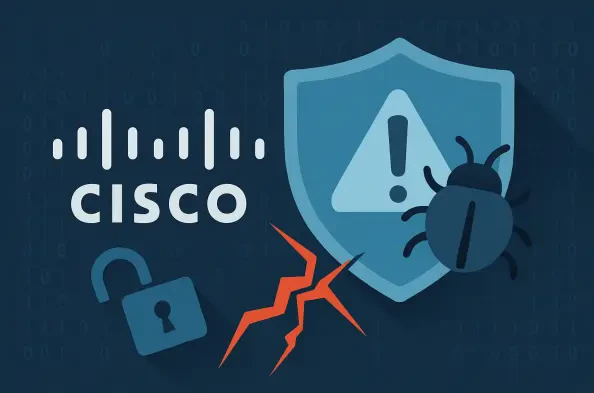What happens when the very tools designed to shield networks from cyber threats become the entry point for sophisticated hackers? Picture a digital fortress, heavily guarded by cutting-edge firewalls, suddenly breached not through brute force, but by exploiting a hidden flaw in its own defenses. This alarming scenario is unfolding across federal and corporate networks in the United States, as a critical vulnerability in Cisco security equipment has come under attack. The urgency of this threat, flagged by the government, demands immediate attention from every organization relying on these widely used devices.
A Critical Threat Surfaces in Cybersecurity
The U.S. government has issued a stark warning about a newly discovered flaw in Cisco security devices, specifically targeting a subset of the Adaptive Security Appliance (ASA) 5500-X Series. These firewalls, integral to protecting sensitive networks, are now at the center of a hacking campaign that threatens both national security and corporate data integrity. The alert, raised with unprecedented urgency, points to a chilling reality: even trusted technology can become a liability if vulnerabilities go unchecked.
This issue transcends a mere technical glitch; it represents a profound challenge to the cybersecurity landscape. With hackers actively exploiting this flaw, the potential for unauthorized access to critical systems looms large. Federal agencies and private enterprises alike are scrambling to address the risk, as the implications of a breach could ripple through essential infrastructure and sensitive operations.
The stakes are heightened by the timing of this discovery, as cyber threats continue to grow in frequency and complexity. Reports indicate that edge devices like these firewalls are increasingly targeted due to their exposure to the internet. This situation serves as a wake-up call, urging all stakeholders to reassess the security of foundational network components.
Why This Vulnerability Demands Immediate Attention
In an age where digital attacks are becoming more audacious, the exploitation of Cisco ASA devices strikes at the core of network protection. These devices, often positioned at the perimeter of networks, act as the first line of defense against unauthorized access. Yet, their visibility to external threats, combined with inconsistent software updates, makes them prime targets for malicious actors seeking to infiltrate systems.
The significance of this vulnerability is amplified by the scale of reliance on Cisco technology across sectors. Federal agencies, major corporations, and critical infrastructure providers depend on these firewalls to safeguard sensitive information. A successful breach could compromise everything from government communications to financial transactions, with consequences that could destabilize entire systems.
Industry insights further underscore the gravity of this issue. According to Verizon’s latest annual report on digital breaches, attacks on edge devices have surged by over 30% in the past year alone, highlighting a troubling trend. This vulnerability is not an isolated incident but part of a broader pattern of exploitation, making it a pressing concern for cybersecurity professionals and policymakers alike.
Unpacking the Sophisticated Attack on Cisco Systems
The campaign targeting Cisco ASA 5500-X Series devices is characterized by its intricate and deliberate nature. A previously unknown flaw in these firewalls has been exploited, allowing attackers to bypass security protocols with alarming ease. The U.S. Cybersecurity and Infrastructure Security Agency (CISA) has labeled this a widespread operation, issuing an emergency directive for federal agencies to respond within a tight window of just over 24 hours.
Cisco’s own analysis, shared through a detailed blog post, describes the attacks as highly advanced, potentially linked to a cyberespionage effort known as “ArcaneDoor.” Internet intelligence firm Censys has suggested possible connections to state-sponsored actors, though definitive attribution remains elusive. This level of sophistication indicates that the perpetrators possess significant resources and expertise, posing a formidable challenge to defenders.
The focus on edge devices like these firewalls reveals a strategic shift in cyberattack methodologies. Attackers exploit outdated software and unpatched systems to gain footholds in networks, often before organizations even detect the intrusion. This trend aligns with broader industry observations of rising exploits targeting perimeter defenses, painting a stark picture of an evolving and relentless threat landscape.
Expert Insights Highlight the Escalating Risk
Authorities and industry leaders have sounded the alarm with striking clarity on this issue. CISA’s emergency directive stressed that the risk to network security is substantial, mandating federal agencies to inventory affected devices and scan for malicious activity without delay. This directive reflects a recognition that hesitation could lead to catastrophic breaches in government systems.
Cisco has echoed this urgency, providing detailed guidance for customers to assess and mitigate exposure to the vulnerability. A spokesperson from the company emphasized the need for rapid action, stating, “Delaying updates or ignoring this threat could leave networks critically exposed.” Such statements reinforce the consensus that proactive measures are non-negotiable in the face of such a sophisticated campaign.
External perspectives add depth to the concern, with Verizon’s latest report noting that edge devices often serve as the weakest link in cybersecurity chains due to inconsistent maintenance. An executive from the firm remarked, “The failure to patch systems promptly is a recurring vulnerability exploited by attackers.” These combined voices from government, industry, and research paint a unified picture of a crisis that demands global attention and coordinated response.
Practical Measures to Secure Networks Against Threats
Addressing this critical vulnerability requires decisive and structured action from organizations across the board. A primary step involves conducting a thorough inventory of all Cisco ASA 5500-X Series devices within networks to pinpoint potential exposure. This aligns with CISA’s mandate for federal entities and serves as a critical starting point for any entity using these firewalls.
Beyond identification, scanning for signs of malicious activity or unauthorized access is essential. Tools and protocols provided by cybersecurity experts can help detect anomalies linked to this specific flaw. Once identified, applying the latest software patches released by Cisco becomes a non-negotiable priority, especially given the tight deadlines outlined in emergency directives.
Long-term resilience hinges on systemic improvements, such as establishing rigorous update schedules for all edge devices to prevent similar exploits. Continuous monitoring of network traffic for unusual patterns, alongside prompt reporting of incidents to relevant authorities or Cisco support, further strengthens defenses. These actionable steps, grounded in guidance from leading authorities, provide a roadmap to mitigate risks and protect against future cyber threats.
Reflecting on a Persistent Cybersecurity Challenge
Looking back, the exploitation of a critical flaw in Cisco security devices stood as a defining moment in the ongoing battle against cyber threats. It exposed not just a technical vulnerability, but a deeper systemic issue in how edge devices were maintained and protected. The sophistication of the attacks, coupled with their potential links to state-sponsored espionage, underscored the high stakes involved in securing digital infrastructure.
The response from government and industry highlighted a shared resolve to confront such challenges head-on. Emergency directives and rapid guidance from authorities played a pivotal role in curbing immediate risks, while expert insights shed light on broader trends in cyber warfare. These efforts, though reactive in nature, laid the groundwork for more proactive strategies.
Moving forward, the lesson was clear: organizations needed to prioritize consistent software updates and robust monitoring practices to stay ahead of evolving threats. Investing in cybersecurity training and fostering collaboration between public and private sectors emerged as vital steps to bolster defenses. This episode served as a stark reminder that vigilance and adaptability remained the cornerstones of safeguarding networks in an increasingly hostile digital landscape.






